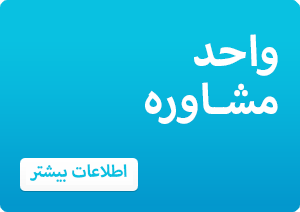 What is Conductive Education?
What is Conductive Education?
Download our latest brochure and flyer | and to view two great videos about Western Australia’s CE programs and family stories – see side bar to the bottom, left
Conductive Education was originally developed in Hungary in the 1940’s and onwards by Dr. Andras Peto. His work led to the establishment of the Peto Institute for Conductive Education of the Motor Disabled and Conductors’ College in Budapest, an internationally renowned centre of excellence for Conductive Education and Conductor training. Both the Conductive Education Institute and the training college have students from all around the world.
Conductive Education services have been developed in a number of different countries across the globe including the UK, New Zealand, Canada, Israel, Germany, Austria, France, China, Sweden, Kuwait, Hong Kong and the US.
Conductive Education is not a therapy neither is it a cure. Rather it is a comprehensive and unique system of education focusing on every aspect of a child’s development – their emotional and cognitive growth, communicative, social and self-care skills as well as their physical capabilities. Children are taught to see themselves as active and self-reliant participants in the world with the ultimate goal of the system being that they develop an orthofunctional personality: a problem solving outlook, with the desire and expectation to be independent.
In Conductive Education the child is actively engaged in his/her own learning goals. Conductive Education differs from other approaches to motor disorders in several ways – the most significant of all being that Conductive Education views motor disorders as a potential learning disability rather than purely a physical disability. This is due to the effect such problems can have on a child’s ability to explore and interact with their environment independently and spontaneously. “‘Conductive’ refers to a particular teaching style in which a prime goal is to bring learners to the realisation that they can direct their own learning and moreover share in the joy of doing so. Satisfaction in learning, ‘learning how to learn’ is a vital factor in solving problems arising from physical disabilities.” (Sutton, 05)
One of the major things that makes Conductive Education stand out from the current therapy and education providers in Western Australia is that it takes an interconnected, unified approach to the child’s development, recognising that each area of development impacts on the next.
The following skills are all developed within a fully integrated program planned by the Conductor:
• Physical skills
• Play skills
• Social, emotional and communication skills
• Academic abilities
• Self-care skills
Key Elements of the Conductive Education System:
The Conductor/Teacher-Conductor
A Conductor is the Conductive Education professional who has undergone 4 years of intensive training, either at the Peto Institute in Budapest or at one of the Institute recognised Training Colleges in other countries. They are trained in the principles, the theory, the philosophy and the practical teaching and facilitation methods of Conductive Education as developed initially by Dr Andras Peto from the 1940s onwards and then by his protégé Dr Hari. This training fosters an in-depth working knowledge of child development, pedagogic practice, educational theory and psychology, musculo-skeletal anatomy, neurology, human movement and the symptomatology of physical disabilities (primarily Cerebral Palsy).
Some Conductors, depending on which College they undertook their training, also graduate with Qualified Teacher Status in order to secure the positioning of Conductive Education services within government school systems hence they are termed Teacher-Conductors. However, all conductors are trained and qualified to teach individuals with movement disorders how to learn across all areas of their development. Conductors remain the only professionals qualified to teach children with physical disabilities below school age.
The Group
The group provides the organisational framework for Conductive Education. Rather than working in isolation the group and its dynamics provide a motivating and supportive educational environment whereby students can learn from, and alongside, their peers. The group dynamic is also essential preparation for later inclusion through the shared social, personal and curricular experiences and the high levels of expectation and achievement. Whilst the ability of the group members is one of the criteria considered during the formation of the groups it is not the defining factor and the age-appropriate group activities are always differentiated to meet the individual members’ educational needs. This again motivates the students as it provides opportunities for children to discover, and become, peer role models.
Facilitation
A wide range of facilitations are used in Conductive Education to ensure that learning is made easier and more effective. The specific facilitations given to the students by the Conductor will be the difference between the student failing or succeeding – however the least amount of facilitation required to achieve a task should be given and only given when failure is imminent. The Conductor will determine the type of facilitation required on the basis of each individual child’s needs and the aim of each activity. Facilitations include the rhythm and pace used to complete a task, verbal instructions, the motivating and purposeful nature of the activities, the build up of the tasks, the group dynamics, the personality of the Conductor, the environment, the songs or equipment used and the use of gravity or specific ‘hands on’ manual facilitation. Facilitations can therefore be psychological, educational, physiological or physical. Perhaps the most distinctive facilitations used in Conductive Education, found in no other therapy, method or system are Rhythmic Intention and the Task Series.
Rhythmic Intention
Andras Peto designed Rhythmic Intention as a learning method by which children with physical disabilities use language to help them organise and carry out movement through the use of intention and rhythm. Before a movement is carried out the child must consciously want to achieve a certain goal – this desire becomes the intention. It is important for a physically disabled child to have the movement they intend to complete vocalised to allow them to prepare on a cognitive level to carry out the action. The Conductor will provide the first voiced intention e.g. “I stand up”. The intention specifically and precisely directs the child of the expectations so that their nervous system is prepared and can send the appropriate signals and messages to the necessary muscle groups in order to achieve the task. The group members then repeat and respond to this intention, using rhythmical counting, the repetition of dynamic words or rhythmical songs to provide a time frame in which to co-ordinate the movement e.g. “I stand up, up up or 1-2-3-4-5”. Thus, movement and speech are linked together to facilitate the learning and the attainment of a goal. For nonverbal children the repetition of dynamic words helps them to gradually link experience with language.
Task Series
The task series is the primary teaching tool of Conductive Education and provides the structure for a developmental all encompassing curriculum appropriate to the requirements of the Western Australian Curriculum Framework. It involves a series of tasks designed to develop the child’s cognitive planning and control of their movements to change place and position in a purposeful way, whilst learning transferable problem solving and communication skills through the age appropriate play and conceptual activities designed by the Conductor. Students engage in a series of dynamic conductive task series across the day in lying, siting and standing positions which prepare them for mobility tasks required in daily living functions, academic performance and communicative, social and self-care activities. This preparation results from the improved range of movements, breathing, circulation, concentration, behaviour and general health that are developed through the task series programmes.
Daily Routine
The daily routine provides the children with the time and opportunity to practise and reinforce the skills they need to master. Careful planning of this routine by the Conductor guarantees unity, ensures learning is interconnected and skills are transferred whilst fully and consistently supporting the child in their efforts to develop. The routine nature of the day’s programme provides the child with a secure learning environment and creates situations where all aspects of a child’s progress – physical, functional, psychological, social, cognitive and communicative – can be extended and developed. Conductive Education is a comprehensive, inclusive educational system that cannot be simply provided through weekly one hour sessions on a one-on-one basis, regardless of the training or qualification of the service provider.
Experiences across the world have demonstrated that, in a unique way, Conductive Education has opened the doors to learning for children with physical and/or multiple disabilities, teaching them how to learn. This is perhaps due to the central aim of Conductive Education in terms of outcomes for its participants – the development of ‘orthofunction’. Developing an orthofunctional personality through appropriate teaching and learning strategies and conditions – Conductive Education – leads to the establishment of high self-esteem and each participant’s belief in his or her own success. Those accessing Conductive Education see themselves (and ensure others see them) as active participants in their communities.
-
۴ خرداد ۹۶، ۰۱:۱۴ - ...سلا..خواهش میکنم جواب بدید..ایا ما ...
-
۵ دی ۹۵، ۱۸:۵۵ - Jjjمیخوام نوبت بگیرم باهاتون صحبت کنم ...
-
۱۶ آبان ۹۵، ۱۶:۲۴ - .با سلام..سوال داشتم میخواستم بدونم ...
-
۱۸ مهر ۹۵، ۱۵:۲۷ - مرکز تخصصی نیوشاباسلام به اطلاع شما می رساند ...
-
۲ مهر ۹۵، ۱۰:۰۰ - بهارلزریوسفیبا عرض سلام و خسته نباشید خدمت ...
-
۹ شهریور ۹۵، ۱۲:۴۴ - ..با سلام..خانوم مرادی دوست یه سوال ...
-
۶ شهریور ۹۵، ۱۶:۴۱ - ..با سلام..خانوم مرادی دوست یه سوال ...
-
۲ تیر ۹۵، ۱۳:۳۲ - ..سلام،یعنی من که الان سال بعد باید ...
-
۱۷ خرداد ۹۵، ۱۶:۳۴ - ...خانم مرادی دوست یک سوال داشتم.من ...










